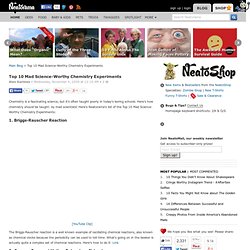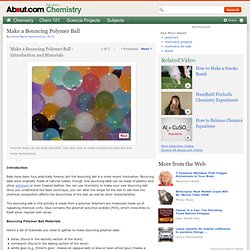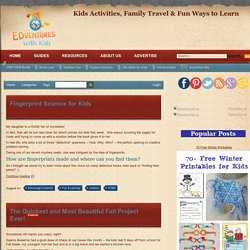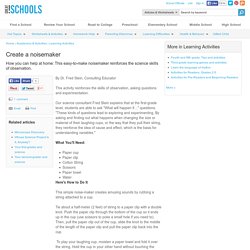

EXPERIMENTS.
Experiments. Build Your Own Lungs. Type Life Science Grade 5th – 7th Difficulty of the Project Medium Cost Safety Issues None Approximate Time Required to Complete the Project 10 – 20 minutes Objective Witness the process of how the lungs expand and contract with the help of the diaphragm.

Materials and Equipment/Ingredients Balloons(Grocery/Convenience Store) Clear Plastic 1 Liter Soda Bottles (Grocery Store) Tape (Hardware/ Office Supply Store) Rubber Bands (Hardware/ Office Supply Store) Y Shaped Tube Introduction Build your own lungs out of balloons and soda bottles. Terms, Concepts and Questions for Background Research Expand and Contract Pressure P.S.I. Research Questions What causes the balloons to expand? Experimental Procedure Cut the soda bottle’s bottom end so that it has a large circle on the bottom and the spout on the top.
Put this balloon on the bottom of the bottle so that it covers the circular opening. To work the model, pull on the bottom balloon and watch as the 2 balloons on the inside of the bottle grow bigger. Science for Kids - Fun Experiments, Cool Facts, Online Games, Activities, Projects, Ideas, Technology.
Science for Kids - Fun Experiments, Cool Facts, Online Games, Activities, Projects, Ideas, Technology. Top 10 Mad Science-Worthy Chemistry Experiments. Chemistry is a fascinating science, but it's often taught poorly in today's boring schools.

Here's how chemistry should be taught: by mad scientists! Here's Neatorama's list of the Top 10 Mad Science-Worthy Chemistry Experiments: 1. Briggs-Rauscher Reaction [YouTube Clip] The Briggs-Rauscher reaction is a well known example of oscillating chemical reactions, also known as chemical clocks because the periodicity can be used to tell time. 2. Who'da thunk that Gummy Bear can be so ... violent? [YouTube Clip] 3. Mentos in various carbonated liquids. You've all seen this before. MythBusters explain: Whatever you do, don't eat a mentos then chug a mouthful of diet soda, mmkay? 4. [YouTube Clip] 11 cheap gifts guaranteed to impress science geeks.
Science comes up with a lot of awesome stuff, and you don't need a Ph.D, a secret lab, or government funding to get your hands on some of the coolest discoveries.

We've got a list of 11 mostly affordable gifts that are guaranteed to blow your mind, whether or not you're a science geek. Click on any image to see it enlarged. 1. Aerogel Also known as frozen smoke, Aerogel is the world's lowest density solid, clocking in at 96% air. Aerogel isn't just neat, it's useful. Price: $35 2. Inside these sealed glass balls live shrimp, algae, and bacteria, all swimming around in filtered seawater.
EcoSpheres came out of research looking at ways to develop self-contained ecosystems for long duration space travel. Price: $80. Make a Bouncing Polymer Ball - Experiment with Polymers. Introduction Balls have been toys practically forever, but the bouncing ball is a more recent innovation.

Bouncing balls were originally made of natural rubber, though now bouncing balls can be made of plastics and other polymers or even treated leather. You can use chemistry to make your own bouncing ball. Once you understand the basic technique, you can alter the recipe for the ball to see how the chemical composition affects the bounciness of the ball, as well as other characteristics. Fun Science Experiments for Kids - Cool Projects & Easy Ideas for Children. Science - Edventures with Kids. We are gearing up for some science fun with this week's Discover & Explore linky.

I love introducing hands-on science activities to kids so that they can experiment, think and ponder all those wonderful questions they love to ask to stump their parents ;) There are a number of easy ways to learn with science -- many of them arise from the questions the kids have about things they see happening in the world around them. For fun ideas about how to introduce every day science concepts, try a few of these fun ways to teach kids about science. Other questions are more easily answered with a quick experiment like this one on optial illustions. My kids have always been crazy over the optical illusions they see in books and very intrigued in how it's done. Amazing Optical Illusions Xtreme Illusions (National Geographic Kids) An optical illusion is a visual image that can be perceived differently depending on how you look at it.
Activity: Create a noisemaker - Learning Activities. By Dr.

Fred Stein, Consulting Educator This activity reinforces the skills of observation, asking questions and experimentation. Our science consultant Fred Stein explains that at the first-grade level, students are able to ask "What will happen if…" questions. "These kinds of questions lead to exploring and experimenting. By asking and finding out what happens when changing the size or material of their laughing cups, or the way that they pull their string, they reinforce the idea of cause and effect, which is the basis for understanding variables.
" What You'll Need: Paper cup Paper clip Cotton String Scissors Paper towel Water.